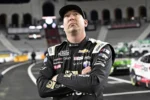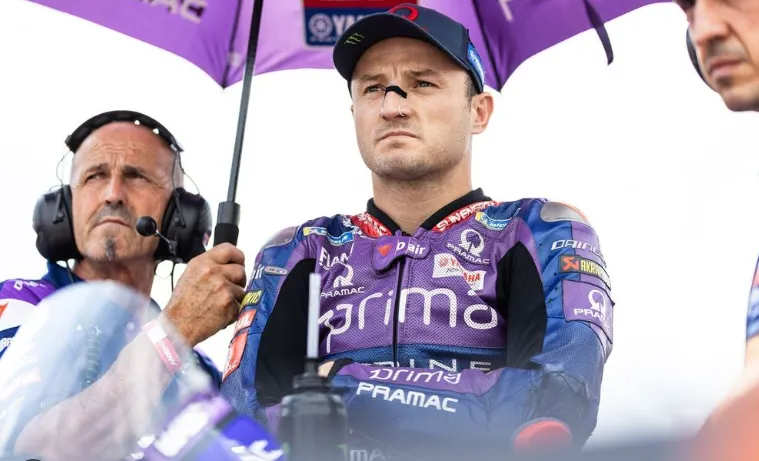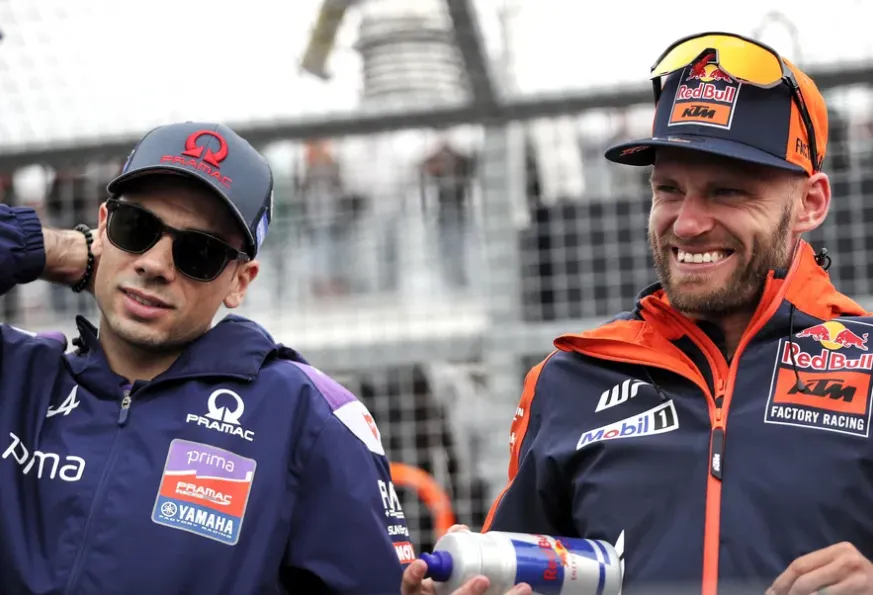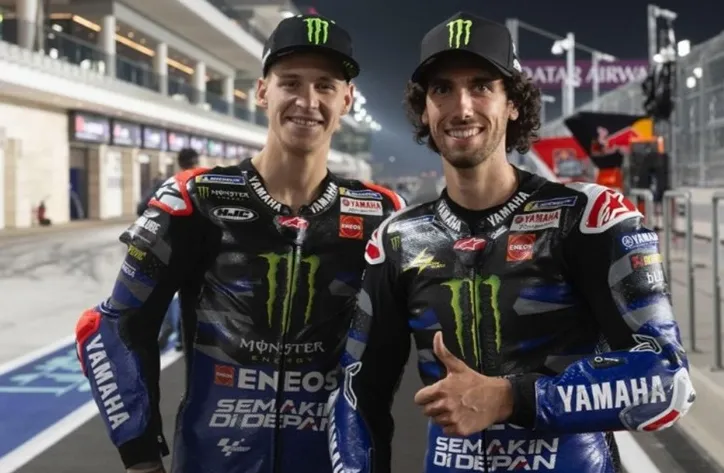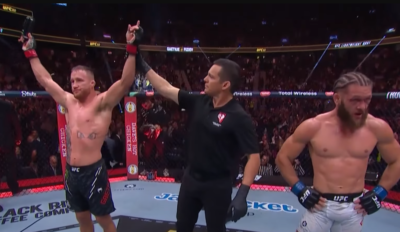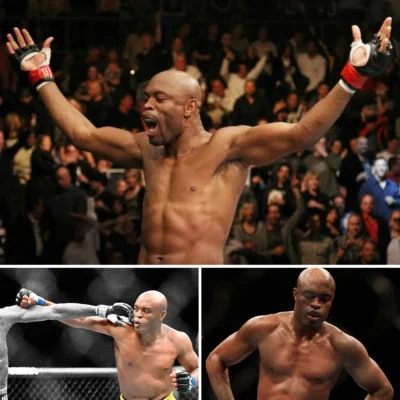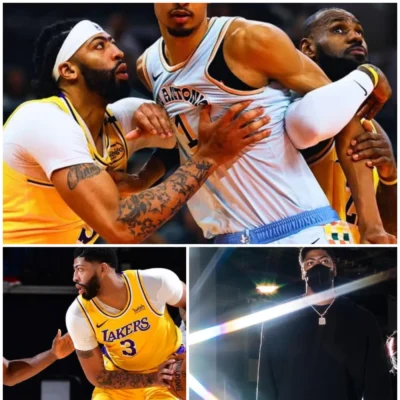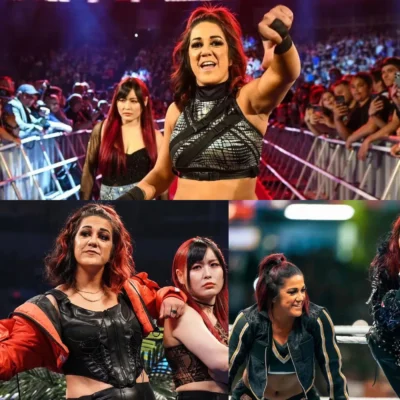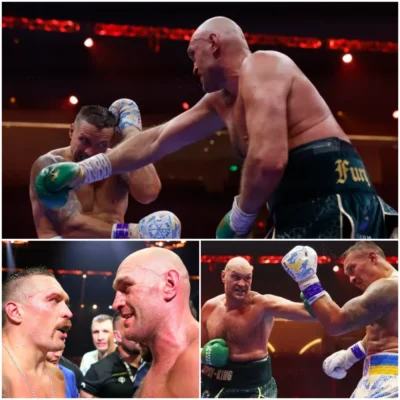
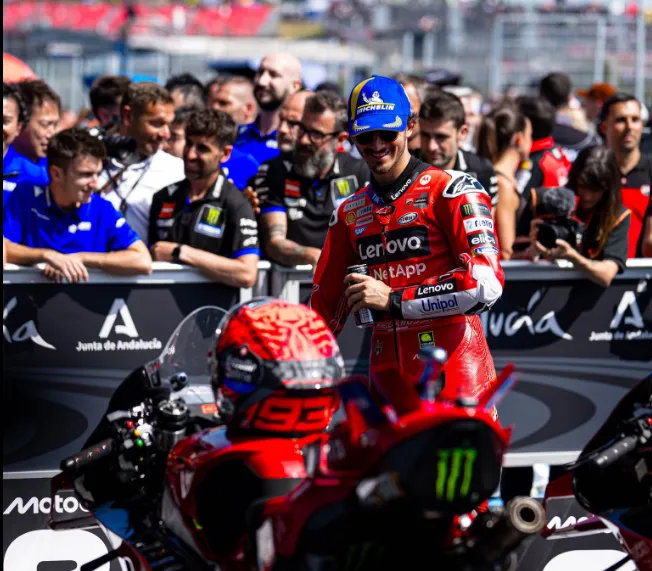
Bagnaia Upset: Marquez Gets to Test the Frame, I’m Restricted by Ducati
Pecco Bagnaia, the reigning MotoGP champion, has voiced growing frustration with Ducati’s internal testing policies, which he believes are giving Marc Marquez an upper hand. As the tension between Ducati’s factory and satellite riders intensifies, Bagnaia’s outburst highlights a brewing storm that could shape the trajectory of the 2025 MotoGP season.
Unequal Access to Upgrades Sparks Controversy
In a sport where milliseconds define champions, access to the latest machinery can make or break a title campaign. That’s exactly why Bagnaia’s frustration has reached a boiling point. According to the Italian rider, he has been denied the chance to test Ducati’s new chassis, which was instead made available to Marc Marquez, who recently joined the Gresini team but remains under Ducati’s broader umbrella.
While Bagnaia holds the factory seat and two world titles, Ducati appears to be prioritizing data gathering and development input from all corners—including its satellite riders. This approach, though logical from an engineering standpoint, is making the factory team’s star rider feel neglected.
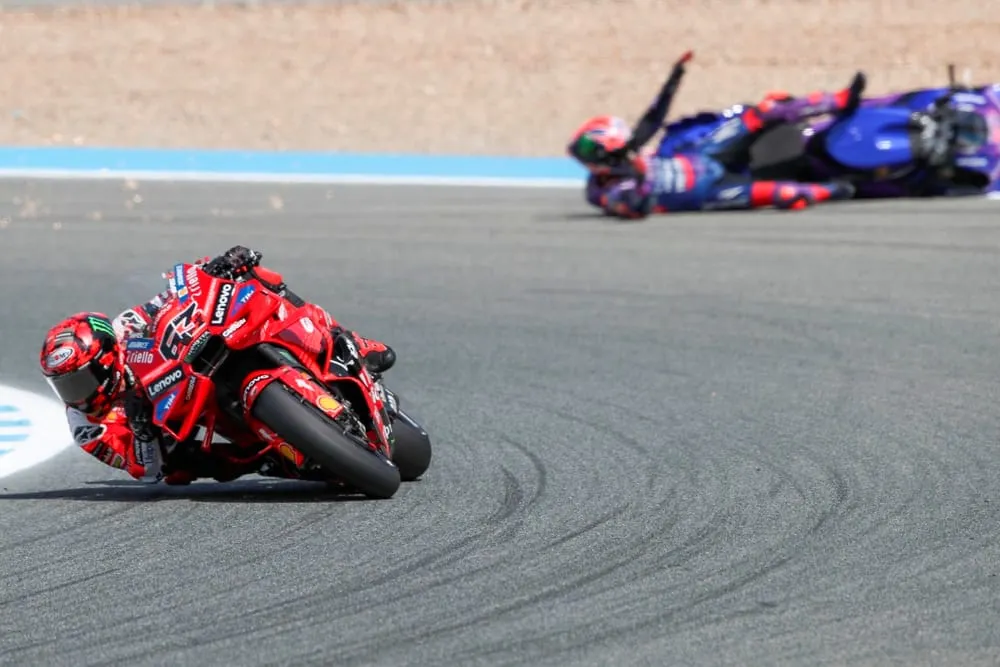
Bold accusations, especially those implying favoritism, are rarely heard from Bagnaia, who is usually calm and diplomatic. But this time, he made it clear: while others were testing cutting-edge components, he was restricted and forced to stick to an older setup. For a rider defending his crown, this restriction feels like betrayal.
The Impact of Weather Conditions in Jerez
Another major factor adding fuel to the fire was the unfavorable wind conditions during the recent test in Jerez. Bagnaia claimed the gusty environment disrupted his ability to properly evaluate setup changes. While Marquez was able to make meaningful strides and test the new frame, Bagnaia was sidelined by the elements.
Instead of pushing his limits with fresh material, Bagnaia was left fine-tuning a basic setup. In his own words, it was a “catch-up” mission with Marquez, not a forward leap. This lack of technical experimentation could be catastrophic in a championship where Ducati’s internal riders are all legitimate threats.
Even worse for Bagnaia, Marquez topped the Jerez test timesheets, demonstrating that the changes and test items he received delivered immediate results. With that kind of performance, questions will inevitably arise about Ducati’s strategic direction: Is the factory team really the priority?
The Ducati Civil War: Factory vs. Satellite
The rise of Marc Marquez within Ducati’s ranks has caused more than just fanfare. While not officially part of the factory team, Marquez’s aura, reputation, and feedback have turned him into a technical asset that Ducati is eager to utilize. The result is a complex situation where Gresini’s resources might suddenly rival those of the official Ducati garage.
This dynamic creates an uncomfortable narrative: Is Ducati splitting loyalty between its riders? While data-sharing across teams isn’t new in MotoGP, the perception of favoritism is particularly dangerous when championship stakes are on the line. For Bagnaia, who has delivered back-to-back titles, this situation feels less like a collaboration and more like internal competition with uneven tools.
When a satellite rider like Marquez gets access to chassis upgrades before the factory rider, it’s hard to argue that Ducati is keeping their hierarchy clear. Fans and analysts alike are now wondering whether Ducati is experimenting with the idea of shared leadership, or if Bagnaia is truly being edged out.
Marquez’s Resurgence and Its Effects on Team Dynamics
Ever since joining Ducati, Marc Marquez has looked like a man reborn. No longer shackled by a lackluster Honda, he is making bold statements—not just with words, but with lap times. His performance in both races and tests has proven that he’s adapting quickly to the Desmosedici and finding pace others have spent years chasing.
This resurgence has created a ripple effect in the Ducati camp. Factory riders like Bagnaia and even Enea Bastianini now find themselves in the unfamiliar position of chasing a satellite rival. And Marquez isn’t just any satellite rider—he’s an eight-time world champion who knows exactly how to manipulate team politics to his advantage.
For Bagnaia, the pressure is now twofold. Not only must he defend his title from external rivals like Jorge Martin and Maverick Viñales, but he also has to look over his shoulder at his own manufacturer’s internal superstar. It’s a psychological burden that could affect confidence and performance.
A Turning Point for the 2025 Championship Battle
What started as a technical grievance may evolve into a defining storyline for the 2025 season. If Ducati doesn’t act swiftly to reassure Bagnaia of his role as team leader, it risks damaging the harmony that has fueled its recent success. Tensions between factory and satellite riders are nothing new, but they must be managed with precision.
If Bagnaia continues to feel sidelined, it may affect his commitment, not just on the track but also in long-term contract negotiations. Remember, other manufacturers are always lurking in the shadows, ready to lure a world champion with promises of full support and leadership status.
For now, the damage may be more psychological than tangible. But if Marquez keeps climbing the podium while Bagnaia struggles with development delays, this imbalance could tilt the title fight in unexpected directions. Ducati needs to weigh the benefits of multi-rider development against the risks of a fractured rider hierarchy.
Can Ducati Keep the Peace and the Podiums?
The 2025 season is shaping up to be Ducati’s most competitive yet—but also its most fragile. With multiple title contenders riding their bikes, the Italian brand has to navigate success with careful diplomacy. Bagnaia’s voice must not be dismissed as mere frustration—it’s a warning sign.
Balancing technical development among factory and satellite teams is a delicate act. If one rider feels neglected or undermined, it can disrupt team chemistry and performance. Ducati’s engineers and management must make sure that every rider, especially its reigning champion, has the tools and confidence needed to win.
The next few rounds will reveal whether Ducati is able to stabilize its internal dynamics or if we are witnessing the start of a power shift within the team. Bagnaia’s performance—and attitude—at upcoming races will be telling. If he regains his dominance, the controversy may fade. But if Marquez continues to outperform him with better equipment, the rift will only deepen.

What Comes Next for Bagnaia and Ducati?
Looking ahead, Bagnaia will need to dig deep to stay competitive. Whether he is granted the chassis upgrades he’s asking for or not, the pressure is now on him to deliver results with whatever tools he has. That will test not only his technical adaptability but also his emotional strength.
Ducati, on the other hand, must make a clear decision: prioritize its factory effort or continue leveraging all data sources equally. If the brand chooses the latter, it must be ready for the fallout. Champions demand respect, and Bagnaia’s recent comments suggest he feels that respect is slipping.
In MotoGP, where performance gaps are microscopic, perception can be as powerful as horsepower. The belief that you are being held back—true or not—can become a self-fulfilling prophecy. Ducati must be aware of the optics and manage its riders accordingly.
Conclusion: A Defining Moment in Ducati History
This isn’t just a dispute about a chassis. It’s a question of loyalty, strategy, and the future of one of MotoGP’s most dominant teams. Pecco Bagnaia’s frustration is not just about wind or test laps—it’s about a fight for respect, resources, and relevance.
As Marc Marquez continues to rise within Ducati’s ranks, the team faces a pivotal moment. Will they reaffirm Bagnaia’s role as their leading man, or will they risk alienating him in pursuit of a broader development strategy? The answers will unfold not just in the garage, but on the track—lap after lap, corner after corner.
One thing is certain: this internal war could end with Ducati standing alone at the top—or watching its empire crack under pressure.



